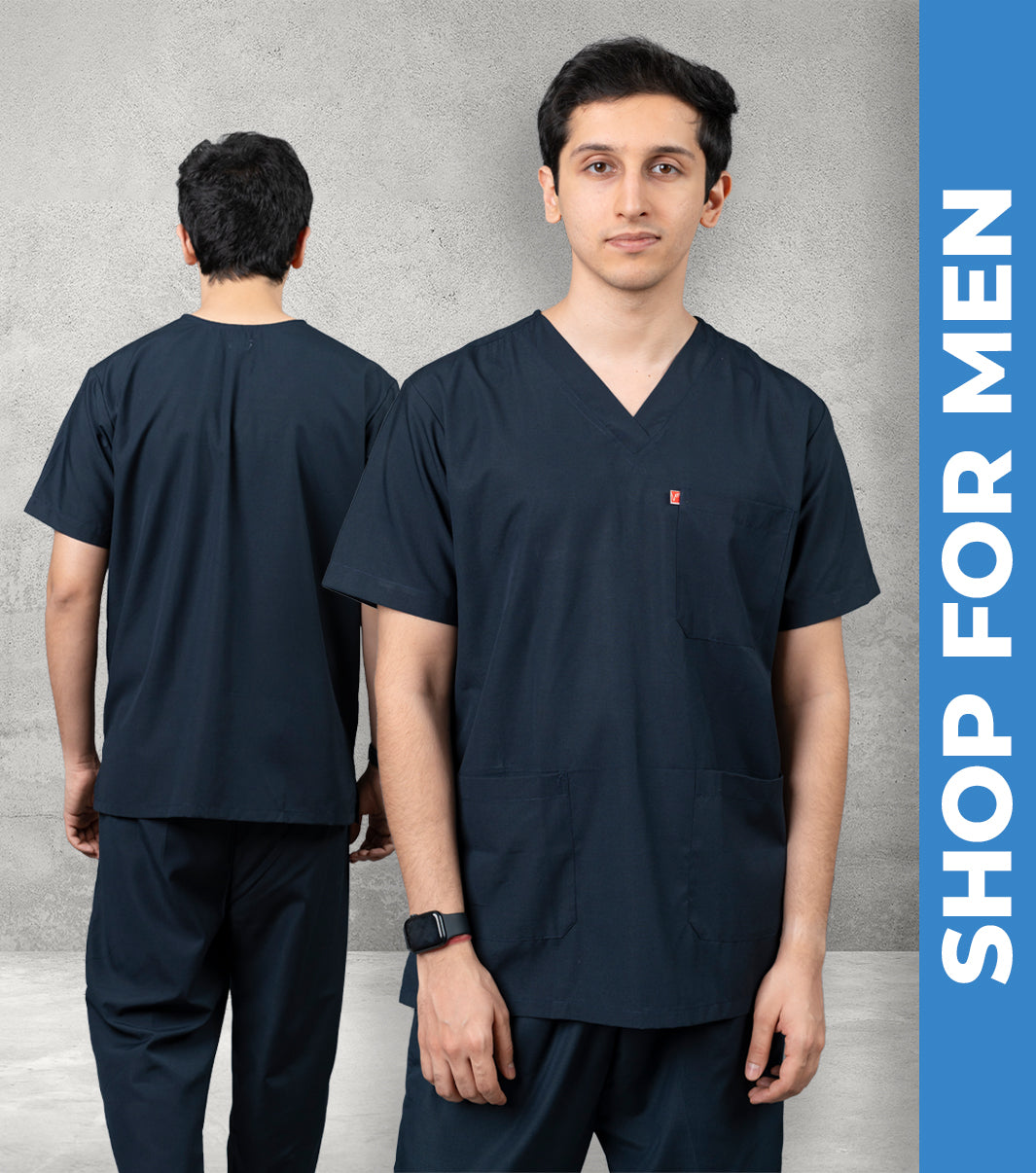Scrubs are a staple in healthcare settings worldwide, serving not only as a uniform but as a critical aspect of professionalism, comfort, and functionality for medical staff. Beyond the common image of basic blue or green outfits, scrubs come in a variety of styles, materials, and fits, each suited for different preferences and needs. Whether you’re a doctor, nurse, dentist, or technician, choosing the right scrubs can make a huge difference in your comfort and efficiency at work.
In this article, we’ll explore the types of scrubs available, from the various materials to the diverse cuts and specialized features that different healthcare professionals may benefit from.
Why Are Scrubs Important?
Functional Role of Scrubs
Scrubs serve multiple important functions in medical environments:
- Hygiene and Safety: Scrubs protect against contaminants and help prevent the spread of infections.
- Identification: Different colors and designs can distinguish staff members and departments.
- Comfort and Flexibility: Healthcare workers often endure long shifts, making comfort essential.
Understanding the types of scrubs available is crucial in finding one that enhances your comfort while allowing you to perform your duties effectively.
Types of Scrub Materials
Choosing the right scrub material is essential for comfort, as healthcare professionals are on their feet for extended hours. Here are some common materials used in scrubs:
1. Cotton Scrubs
Cotton is a natural, breathable fabric that’s comfortable against the skin and absorbs moisture well. However, pure cotton scrubs may wrinkle easily and can shrink after washing. They are ideal for people with sensitive skin and those working in less physically demanding roles where durability is less critical.
Pros: Soft, breathable, skin-friendly
Cons: Wrinkles easily, may shrink, less durable
2. Polyester Scrubs
Polyester is a synthetic material that is durable, lightweight, and wrinkle-resistant. Many scrubs today are made with polyester blends, combining durability with comfort. Polyester scrubs are also easy to care for, as they dry quickly and hold color well over time.
Pros: Durable, wrinkle-resistant, quick-drying
Cons: Less breathable, may feel stiffer than natural fabrics
3. Spandex Blends
Many modern scrubs incorporate spandex, which provides a stretch component, making them ideal for healthcare workers who require flexibility. Blends with spandex offer both comfort and mobility, reducing the feeling of restriction during physical tasks.
Pros: Flexible, comfortable, retains shape
Cons: Higher cost, can be less breathable
4. Rayon Blends
Rayon adds softness and a silk-like feel to scrubs. Often used in combination with polyester or cotton, rayon scrubs are a comfortable choice. They are less prone to shrinking than cotton, though they may be less durable in intense environments.
Pros: Soft, lightweight, resists shrinkage
Cons: Less durable, prone to pilling
Types of Scrub Designs
With different body shapes, work demands, and personal preferences, a range of scrub designs are available. Here are the main types:
1. Basic Scrub Tops and Pants
This standard scrub type includes a simple top and drawstring pants. They are often unisex and provide a loose, comfortable fit. Basic scrubs are practical, affordable, and are commonly used in many healthcare facilities.
Best For: General healthcare roles, staff who prefer simplicity
2. Fitted or Tailored Scrubs
Fitted scrubs are designed to have a more contoured shape, providing a modern and professional look. They are particularly popular with healthcare professionals who prefer a tailored appearance without compromising on comfort.
Best For: Those looking for a polished, professional look
3. Athletic or Stretch Scrubs
Athletic scrubs are made from stretch fabrics, including spandex blends, and provide excellent flexibility. They are perfect for individuals who perform tasks requiring a wide range of motion.
Best For: Active roles, such as emergency staff or pediatric nurses
4. Cargo Scrubs
Cargo scrubs have additional pockets on the pants, offering more storage for small tools and accessories. They are ideal for professionals who need quick access to items like pens, notepads, and thermometers.
Best For: Nurses, EMTs, or any professional needing extra storage space
5. Maternity Scrubs
Maternity scrubs are specifically designed to accommodate a growing belly, often with an adjustable waistband or empire-waist style top. These scrubs provide comfort and support, allowing pregnant healthcare workers to continue their duties with ease.
Best For: Expecting healthcare professionals
6. Long-Sleeved Scrubs
For added coverage, some professionals prefer long-sleeved scrub tops. They provide extra warmth and protection, which can be particularly useful in colder environments or labs.
Best For: Lab workers, colder climates, those needing added coverage
Specialized Scrubs
Beyond the basic scrub categories, certain roles may require specialized features.
1. Antimicrobial Scrubs
Antimicrobial scrubs are treated with agents that reduce the growth of bacteria, which can help in minimizing the spread of germs. These scrubs are especially beneficial in high-risk settings, such as hospitals or infectious disease departments.
2. Fluid-Resistant Scrubs
Fluid-resistant scrubs are designed with a special coating that repels liquids, offering additional protection from spills and splashes. They’re commonly used in surgical or emergency settings where exposure to bodily fluids is more likely.
3. Eco-Friendly Scrubs
Made from sustainable materials like recycled polyester or organic cotton, eco-friendly scrubs are a good choice for environmentally conscious professionals. These scrubs are biodegradable, comfortable, and durable, making them a responsible and practical choice.
How to Choose the Right Type of Scrubs
Choosing the right scrubs depends on your unique requirements, such as comfort, durability, style, and workplace demands. Here are some tips for selecting the best scrubs:
1. Assess Your Workplace Needs
Consider the specific requirements of your work environment. For example, if you work in a high-traffic emergency room, fluid-resistant and antimicrobial scrubs may be more suitable.
2. Prioritize Comfort
Long shifts require comfortable attire. Look for breathable materials like cotton blends if you prefer softness, or opt for spandex blends if flexibility is a priority.
3. Choose the Right Fit
Scrubs come in various fits, from unisex to fitted styles. Try on different types to see what best matches your preference. Fitted or tailored scrubs provide a more polished appearance, while relaxed fits offer more comfort.
4. Consider Storage Needs
If you carry many tools, cargo scrubs with extra pockets might be the best choice. Evaluate how many pockets you need and where they are located for easy access.
Caring for Your Scrubs
Keeping your scrubs clean and well-maintained is essential. Here are some care tips:
- Follow Washing Instructions: Some materials require special care to avoid shrinking or fading.
- Use Cold Water: Cold water helps retain color and prevent shrinking, especially for cotton blends.
- Avoid Harsh Detergents: Mild detergents preserve fabric integrity and color.
- Air Dry: Air drying helps prevent shrinkage and maintains fabric elasticity, especially for spandex blends.
Conclusion
Scrubs are an essential part of a healthcare professional’s wardrobe, and with so many options, it’s easy to find a pair that meets your needs for style, comfort, and functionality. By understanding the different types of scrubs—whether based on materials, design, or specialized features—you can choose the perfect scrubs to support you through long shifts and demanding tasks. Make sure to prioritize comfort, durability, and suitability to your role to ensure you stay at ease and prepared on the job.






